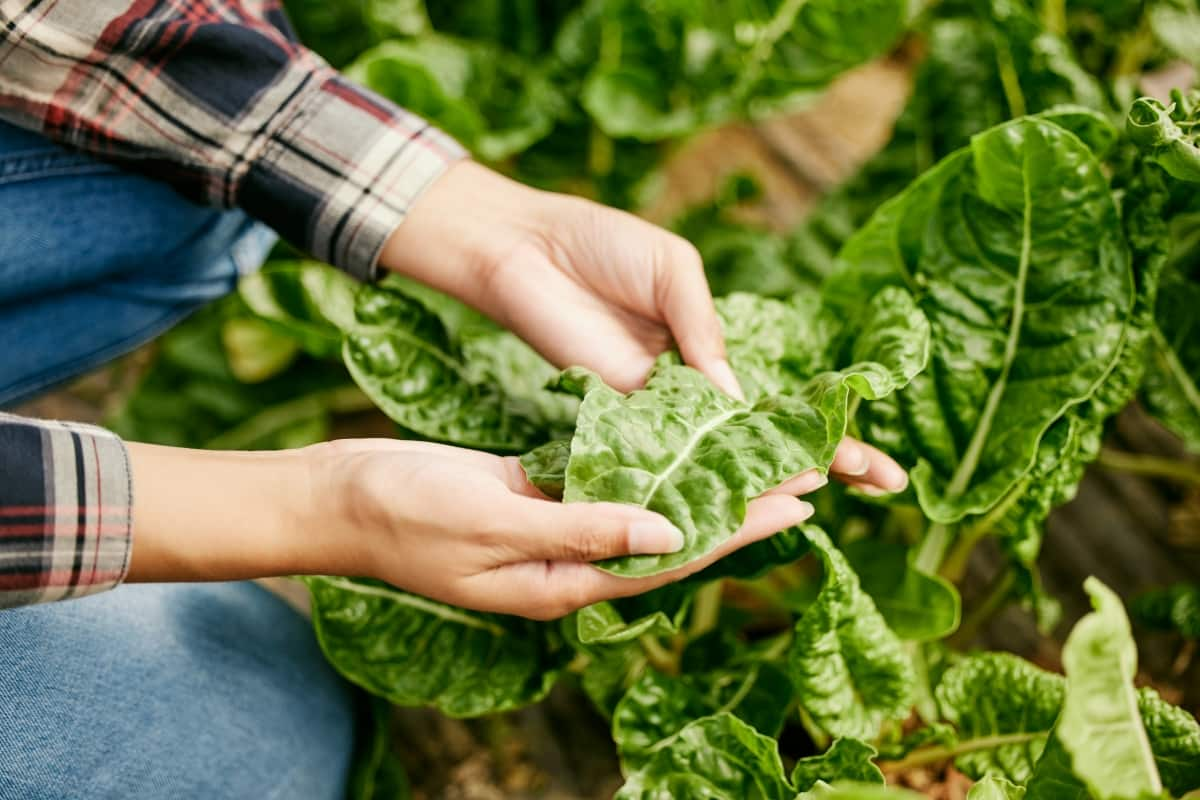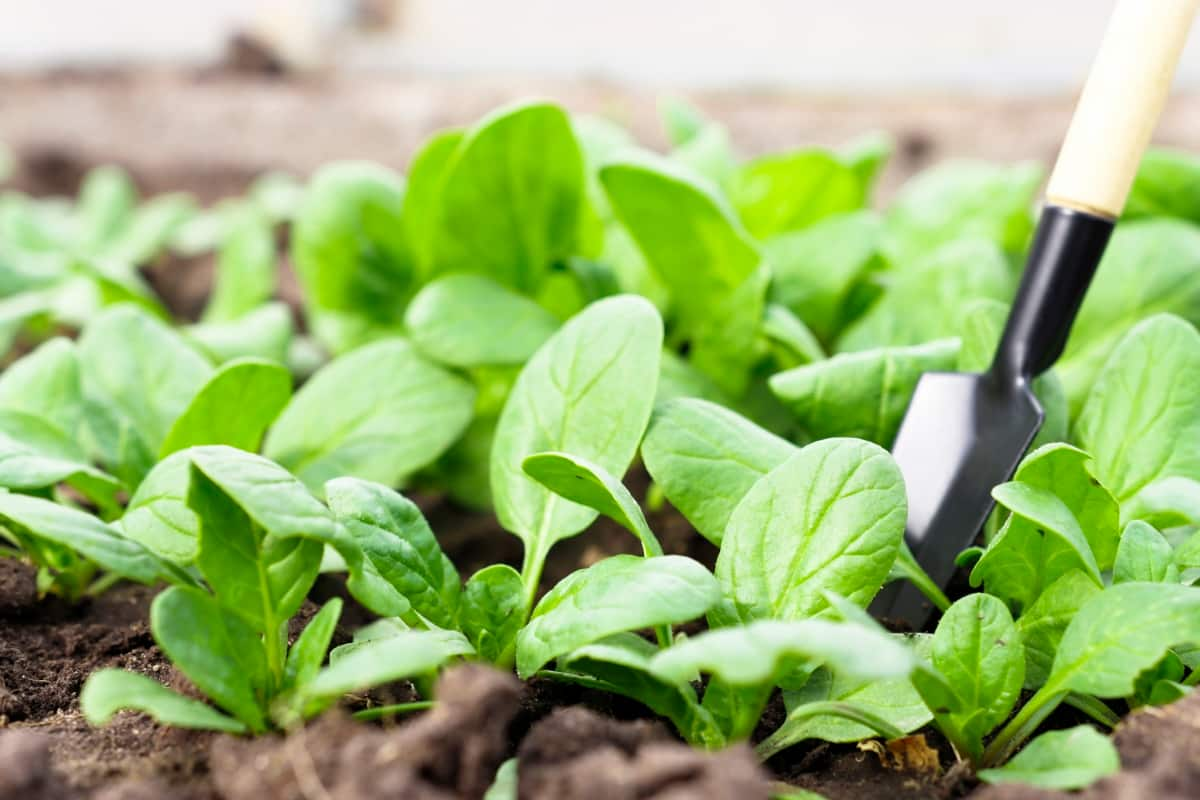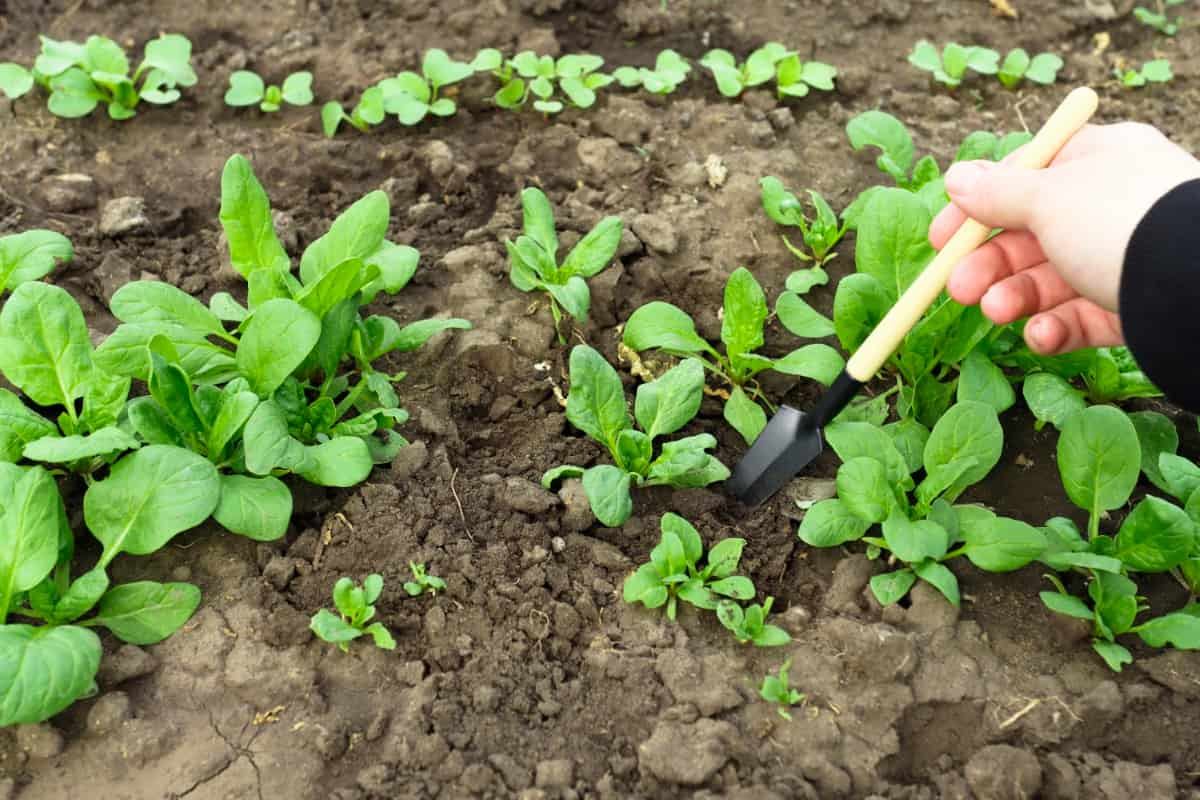Spinach is the perfect vegetable whether you are a novice or an experienced gardener. Growing these leafy plants is easy; they are packed with nutrients and are quick to harvest. However, they are not without problems. A dying spinach plant may display signs such as yellowing leaves, wilting and drooping leaves, slowing or stunted growth, and surfacing roots. The main causes of dying spinach plants and remedies for reviving them are listed below.

6 Causes of Dying Spinach
Incorrect Watering and Soil Drainage
The most common cause of spinach plants dying is incorrect watering. Depending on the season, spinach plants require different amounts of water, so it’s easy to get the frequency and volume wrong. Spinach plants generally need to be watered once a week. Originally from Persia and Central Asia, where rainfall is minimal, they are both annual and perennial plants. The roots of a plant can be suffocated by overwatering, resulting in its death. While underwatering, spinach plants dry out and cannot absorb and distribute nutrients from the soil.
Despite this, how you water the spinach plant now won’t be consistent throughout the year. Water more frequently when the weather gets hotter (or sunnier) and less frequently when the weather gets cooler. In this context, soil condition is also important. For example, soil with drainage problems would cause overwatering even if a small amount of water were poured. It might be required to repot the plant if the soil is too compacted or to aerate it if it is too heavy or large for easy movement.
Lack of Nutrients in the Soil
A healthy balance of nutrients is also necessary for spinach plants to thrive. Soil doesn’t contain an infinite amount of nutrients. Occasionally, you will need to replenish the nutrient. When spinach plants start to die, many visual symptoms will result from nutrient deficiency. Selecting fertilizer or plant food is usually recommended based on the ratio of NPK (nitrogen, phosphorus, and potassium). Fertilizing the soil depends on several factors, including the soil medium and the plant’s maturity.
Over-fertilizing can also harm plants and may cause them to die indirectly. A soil test can help you to identify the nutrient causing the problem. It is most possible that you have a nitrogen deficiency, so fertilize immediately with a high-nitrogen fertilizer. If nitrogen isn’t the cause of the problem, this will only exacerbate it. A soil test is how to be safe and completely understand the cause. Following the instructions on the package, apply a fertilizer to target the deficiency. A 15-10-10 NPK ratio is recommended for spinach plants.
Over-Fertilization
Fertilizer plays a crucial role in vegetable gardening. While it may stimulate growth when used appropriately, it can be overdone. Overfertilizing your spinach will damage its roots and burn its leaves rather than improve its growth. Adding excess nutrients, salts, and chemicals to the soil adversely affects the plant’s health, causing severe stress.
As the plant becomes stressed, its leaves become yellow and wilt. Brown spots or uneven discoloration on the leaves and stems may also exist. You should read the instructions thoroughly before applying any fertilizer, no matter what type you choose. Fertilizers are available in various concentrations and applied in various ways.
It is recommended to dilute some in water before adding them to the soil, while others should be added directly. Some slow-release fertilizers must be applied once every few months, while others must be applied regularly to maintain nutrient levels. The soil will need to be flushed as best you can with water, and you will need to hold off fertilizing for several weeks if you overdo it.
In case you missed it: Hydroponic Spinach Farming in a Greenhouse: Key Rules to Start from Scratch

Too Much or Too Little Sunlight
This is another reason why too much of something good can be detrimental. Spinach plants can die off if they receive too much sunlight, especially in full or direct sun. Plants can dehydrate due to prolonged exposure to sunlight, which also causes leaf scorching and leaf tip burn. It is generally recommended that spinach plants receive about least 6 hours of sunlight daily.
In contrast, too little sunlight can also lead to plant death since it will prevent them from producing energy and photosynthesizing. Don’t forget this when the days begin to shorten. In such cases, the plant may benefit from repositioning in an area with more sunlight exposure.
Damage from Pests
Growing spinach plants requires pest control. Cutworms and wireworms commonly attack spinach plants. Depending on the pest type you are dealing with, you would use a different pest control solution. If you want to grow spinach organically, you can use several natural remedies. Among these products is food-grade diatomaceous earth, which has recently gained popularity.
Root Rot
Too much and too little water have the same effect. If the soil becomes waterlogged or does not drain well, the shallow root system can become overwatered. Root rot is caused by excessively moist soil that prevents oxygen from reaching the roots. Once it has set in, root rot is difficult to control and prevent because it is caused by fungus. When the roots become mushy, they cannot absorb water or nutrients.
As a result of being underwater, the leaves will begin to wilt and yellow. Root rot can be treated with a change in the watering routine in moderate cases. Monitor the plant and let the soil dry before watering again. Prevention of root rot is better than dealing when it occurs. Before planting, ensure the soil is loose and well-draining. Keep water away from the roots; do not overwater the soil.
In case you missed it: How to Grow Spinach in Small Spaces: A Guide for Urban Gardeners

Conclusion
Don’t panic if your spinach leaves start turning yellow or white as a sign that they are dying. You can identify which is most likely by examining these signs and applying these easy fixes. The plant should be pulled out from the garden before the disease spreads, and your approach should be reevaluated if none of those fixes work. it is an easy fix, and your plants should return to normal in no time in most cases.
- Feed Your Flock for Less: Top 10 Tips to Save on Chicken Feed
- Ultimate Guide to Ossabaw Island Hog: Breeding, Raising, Diet, and Care
- Hatching Answers: The Top 10 Reasons Your Chickens Aren’t Laying Eggs
- Eggs and Economics: Breaking Down the Cost of Raising Backyard Chickens
- Defend Your Greens: Proven Methods to Keep Iguanas Out of Your Garden
- Ultimate Guide to Cinnamon Queen Chicken: A Comprehensive Guide for Beginners
- Ultimate Guide to California Tan Chicken: Breeding, Raising, Diet, Egg-Production and Care
- Ultimate Guide to Marsh Daisy Chicken: Breeding, Raising, Diet, and Care
- 10 Types of Chicken Farming Businesses You Can Start for Profits